

TEXAS
May 2004

1 of 4


TEXAS
May 2004


1 of 4
One of the finest herp photographers I know is Joe Forks. (Check out his gallery and see for yourself.) For years
I’ve admired his posts on various forums, almost all of them from his property in west Texas. As one stunning photo
after another
―
the scenery, the snakes, the sense of isolation
―
pressed against my imagination, I found myself
leaning more and more towards Texas, a place I’d never herped.
The tipping point came when Joe presented an impossibly pink Coachwhip glowing against the white stones of a
dry river bed, one of those “If I found nothing else, this would still make the whole trip worthwhile” specimens. That
was it. I had to see one for myself.
I asked Joe about herping his home state and was thrilled as a kid when he included an invitation to join him at
the ranch. Asked a buddy of mine, Danny Mendez, if he wanted to come along (“I’m SO there!!”), and off we went to
discover Texas.
Joe and his friend, Jay, meet us in Del Rio and we head west to Terrell county, crossing the impressive river that
gives the Trans-Pecos region its name.
Eventually we turn off the highway and bounce along an unpaved road, when rounding a curve, Joe stops his
truck and jumps out. “Look at that,” he says, “not common around here.” Scrunched down in the gravel is a Texas
Horned Lizard, a bit gray and drab, as if to match the stones.
As we’re looking at the lizard, Jay spots movement by the other side of the road. He gives chase, jumping back
and forth around a small bush until he flushes another Horned Lizard, this time a Roundtail. These cute little guys are
smaller and less spiky than cornutum, and have this curious defensive posture of hunching their hind legs and tilting
back their heads (sort of how I look with an intestinal flu).
Continue driving through the surrounding thornscrub when something else skitters across the road that grabs
our attention. Now, all along we’ve been seeing ordinary lizards, with plain brown and black stripes, dashing off to
the side. But this one is different, an intense flash of peacock blue that catches Joe’s eye and brings us to a halt. Turns
out to be something special, appropriately named for the region.
We drive on towards the ranch, descending in elevation where the weathered plateau wrinkles into valleys
covered by sparse vegetation. Joe and Jay are now way ahead of us, when bam! they slam on the brakes. Doors fly
open, they go running, and we speed up to find out what’s going on. Suddenly I see it crossing the road
―
from a
quarter-mile away!
―
a streak of day-glow magenta disappearing into the creosote: Coachwhip!!
Danny jumps out and races ahead while I grab for my camera. Meanwhile, Joe and Jay are in hot pursuit of the
snake, dodging cactus and trying to cut off an escape. They step in front, the Coachwhip reverses. They go to grab,
the snake zooms out of reach. From a distance I keep seeing flashes of red, in and out of bushes.
Danny catches up and joins the dance. Soon all three men have circled the snake; it makes a break for the road,
heading in Danny’s direction. He reaches down and gets a hold of it, but it turns on him
―
striking right at his face!
Danny’s so startled he falls backwards, slips on the loose gravel, and goes down rear-first in a spectacular fall. Even
the Coachwhip is surprised. It momentarily escapes, but a few seconds later it’s safely in the hands of our hosts.
I can’t believe the color. Like a figment of Photoshop, but there it is live in front of me. The digital darkroom
doesn’t do it justice.
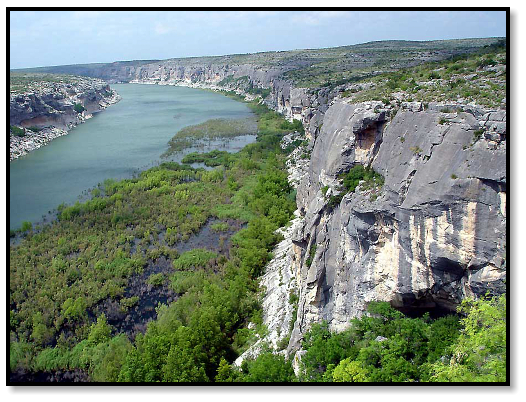
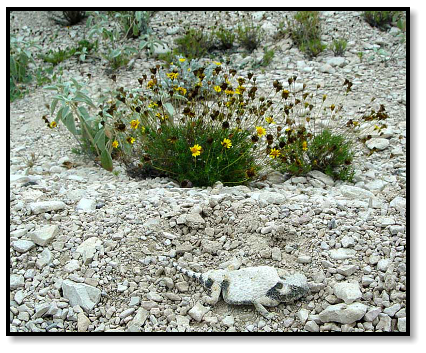
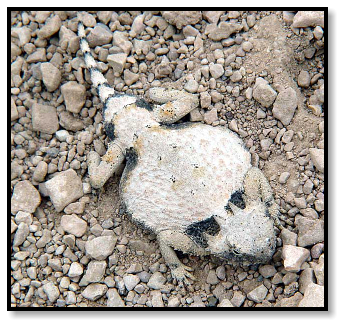


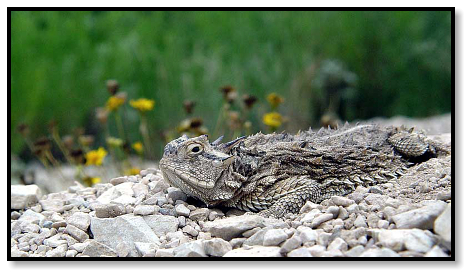



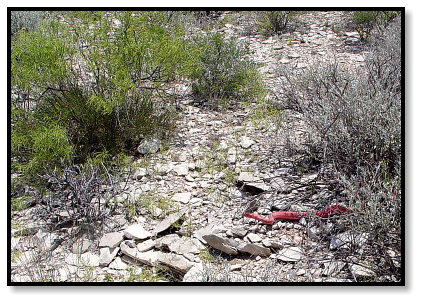
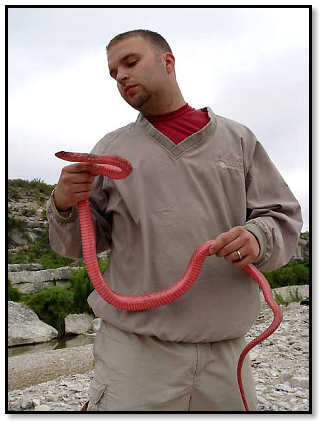
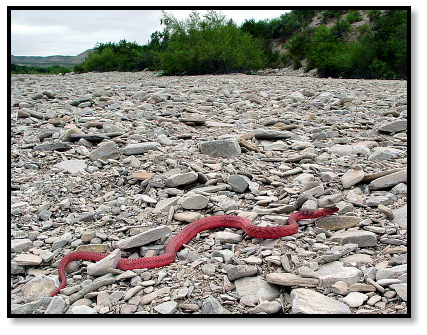
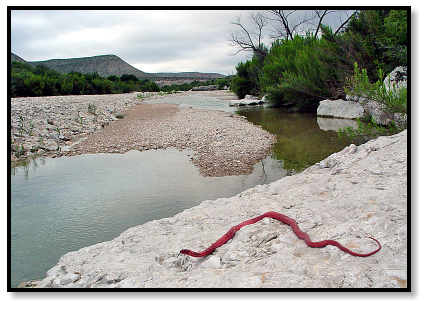

Pecos River
Joe (left) and Jay stare down the lizard
Texas Horned Lizard (staring back)
Phrynosoma cornutum
Roundtail Horned Lizard
Phrynosoma modestum
Trans-Pecos Striped Whiptail
Cnemidophorus inornatus heptagrammus
Western Coachwhip
Masticophis flagellum testaceus








